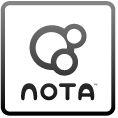 Customize your Google homepage by adding a theme and gadgets. You can switch back and forth from iGoogle to Classic view.
Customize your Google homepage by adding a theme and gadgets. You can switch back and forth from iGoogle to Classic view.One can benefit from having a "personalized home page" that gives you access to key information from across the web. iGoogle is one way of allowing to create your own "virtual locker". Personalized gadgets can be added to this self-designed page, including news, local weather, a personal calendar, to-do lists, encyclopedias, and many other time-saving tools that will help you organize and complete one's school work. There are educational gadgets such as the SAT/ACT Word of the Day and powerful gadgets like Google Reader, which brings together information from many sources.
Activity #1 - Create an iGoogle page to be used as your homepage.
Choose a theme. Add and arrange gadgets as directed.
Begin with the following:
- Google News
- GMail
- Daily Literary Quote
- USA Today News
- Optical Illusion of the Day
- Google Map Search
- Wikipedia Search
- Dictionary
- Online English Grammar
- Calendar
- Livestrong Fitness Tip of the Day
Activity #2 - Add a post to your blog describing 3 of the gadgets you added to your iGoogle page and why you chose them. Include the # of current users for each gadget. Take a snapshot of your iGoogle page and post it on your blog as well.












